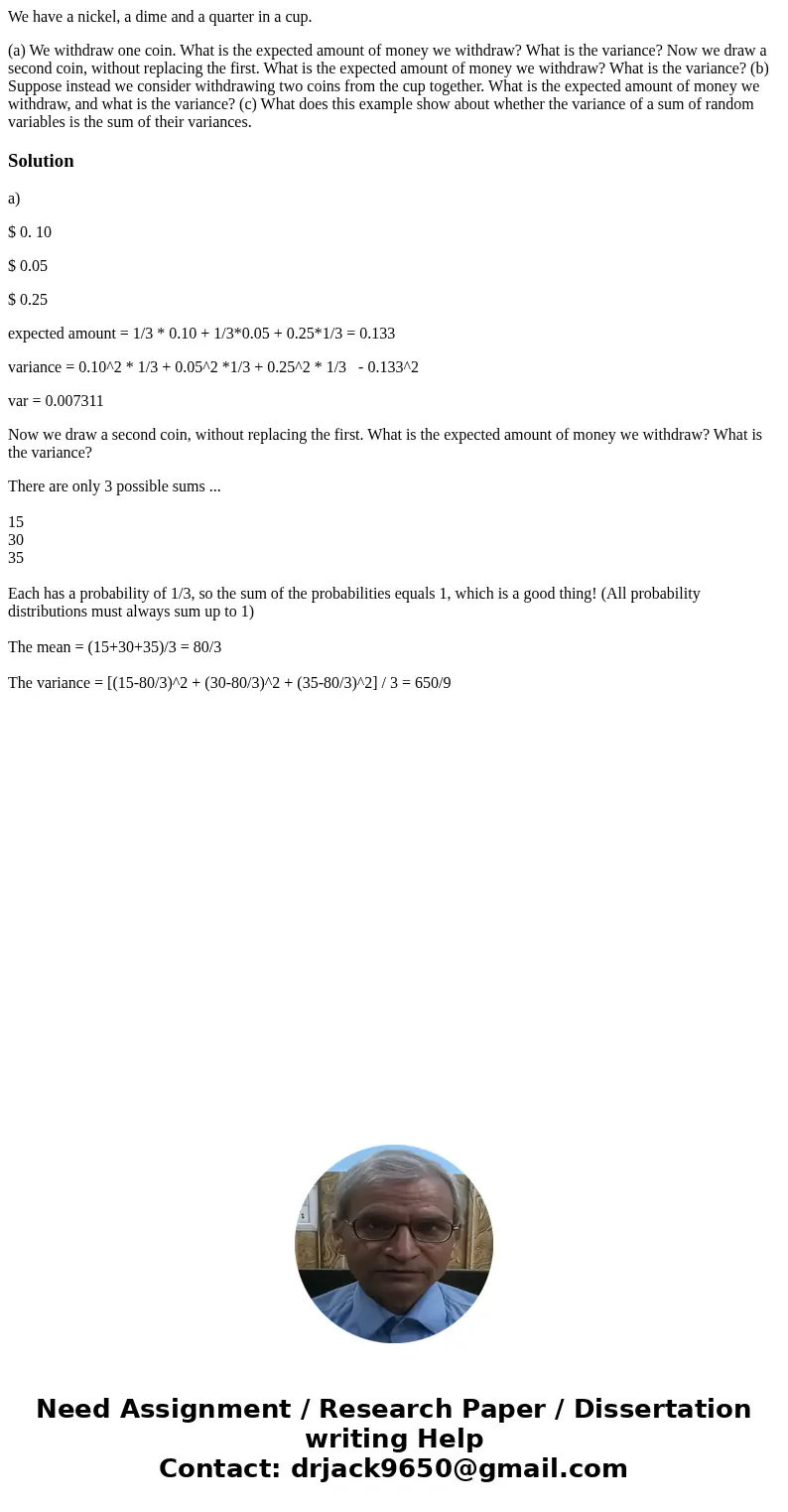We have a nickel a dime and a quarter in a cup a We withdraw
We have a nickel, a dime and a quarter in a cup.
(a) We withdraw one coin. What is the expected amount of money we withdraw? What is the variance? Now we draw a second coin, without replacing the first. What is the expected amount of money we withdraw? What is the variance? (b) Suppose instead we consider withdrawing two coins from the cup together. What is the expected amount of money we withdraw, and what is the variance? (c) What does this example show about whether the variance of a sum of random variables is the sum of their variances.
Solution
a)
$ 0. 10
$ 0.05
$ 0.25
expected amount = 1/3 * 0.10 + 1/3*0.05 + 0.25*1/3 = 0.133
variance = 0.10^2 * 1/3 + 0.05^2 *1/3 + 0.25^2 * 1/3 - 0.133^2
var = 0.007311
Now we draw a second coin, without replacing the first. What is the expected amount of money we withdraw? What is the variance?
There are only 3 possible sums ...
15
30
35
Each has a probability of 1/3, so the sum of the probabilities equals 1, which is a good thing! (All probability distributions must always sum up to 1)
The mean = (15+30+35)/3 = 80/3
The variance = [(15-80/3)^2 + (30-80/3)^2 + (35-80/3)^2] / 3 = 650/9

 Homework Sourse
Homework Sourse